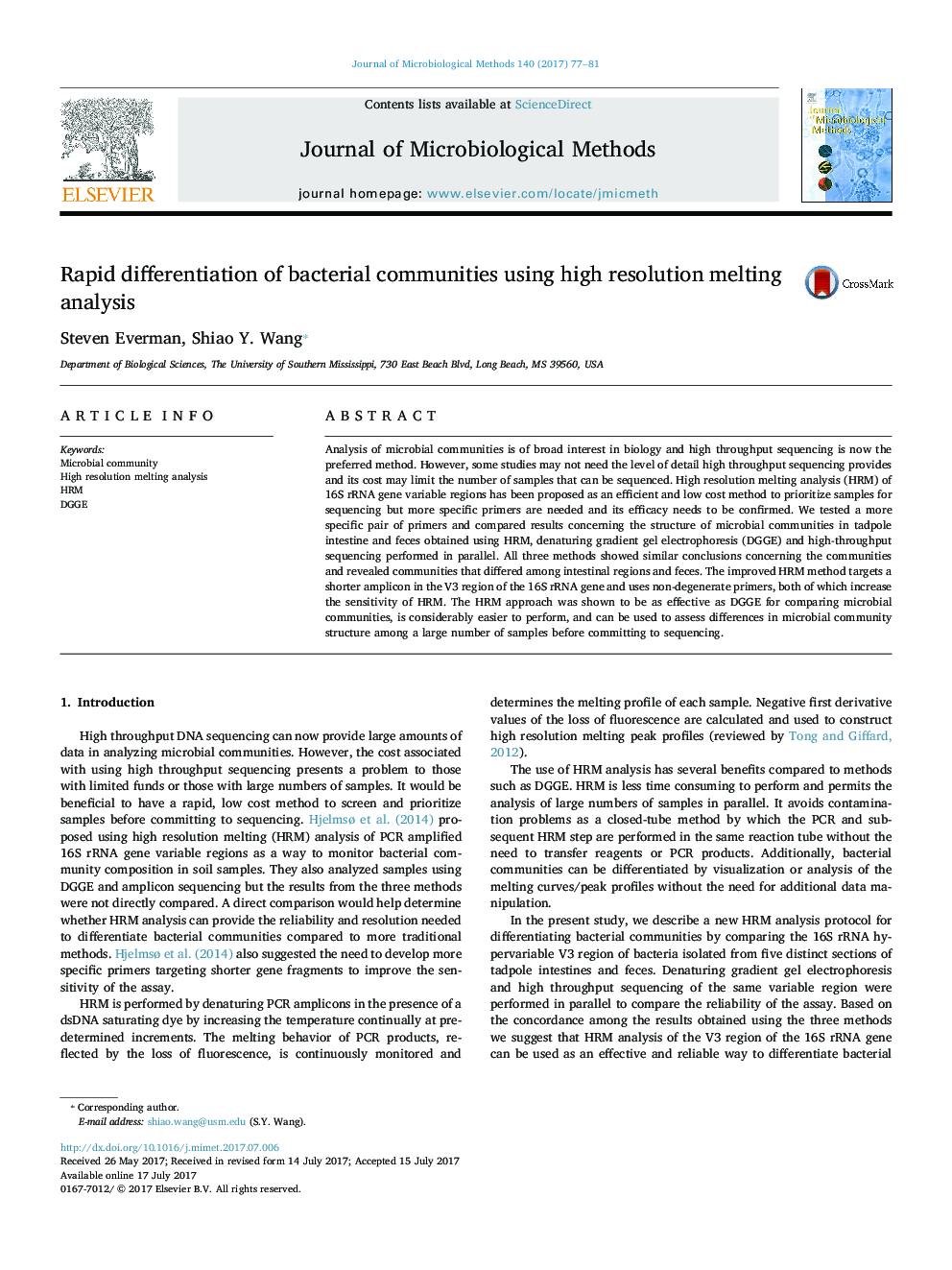| کد مقاله | کد نشریه | سال انتشار | مقاله انگلیسی | نسخه تمام متن |
|---|---|---|---|---|
| 5522211 | 1545903 | 2017 | 5 صفحه PDF | دانلود رایگان |
- High resolution melting analysis (HRM) of the 16S rRNA V3 region can be used to distinguish bacterial communities.
- The assay uses a pair of specific primers that targets a ~Â 200 bp amplicon in the 16S rRNA V3 region.
- HRM can be used as a screening tool for deciding which samples to sequence when the number of samples is large.
Analysis of microbial communities is of broad interest in biology and high throughput sequencing is now the preferred method. However, some studies may not need the level of detail high throughput sequencing provides and its cost may limit the number of samples that can be sequenced. High resolution melting analysis (HRM) of 16S rRNA gene variable regions has been proposed as an efficient and low cost method to prioritize samples for sequencing but more specific primers are needed and its efficacy needs to be confirmed. We tested a more specific pair of primers and compared results concerning the structure of microbial communities in tadpole intestine and feces obtained using HRM, denaturing gradient gel electrophoresis (DGGE) and high-throughput sequencing performed in parallel. All three methods showed similar conclusions concerning the communities and revealed communities that differed among intestinal regions and feces. The improved HRM method targets a shorter amplicon in the V3 region of the 16S rRNA gene and uses non-degenerate primers, both of which increase the sensitivity of HRM. The HRM approach was shown to be as effective as DGGE for comparing microbial communities, is considerably easier to perform, and can be used to assess differences in microbial community structure among a large number of samples before committing to sequencing.
Journal: Journal of Microbiological Methods - Volume 140, September 2017, Pages 77-81
